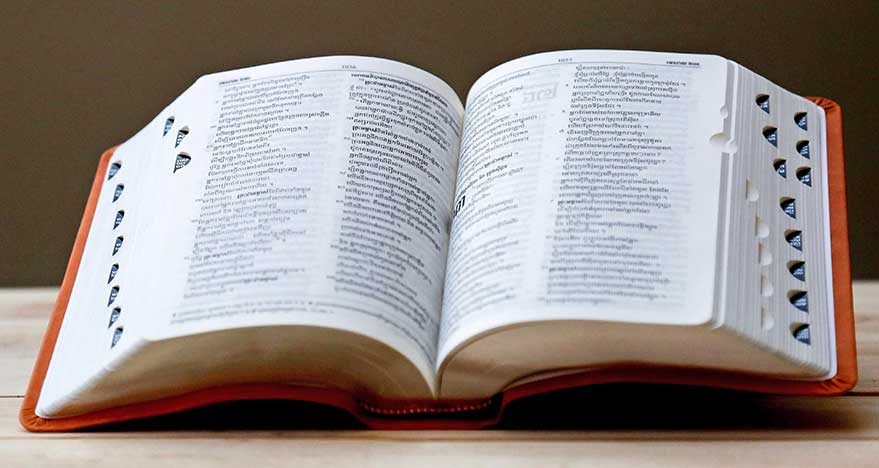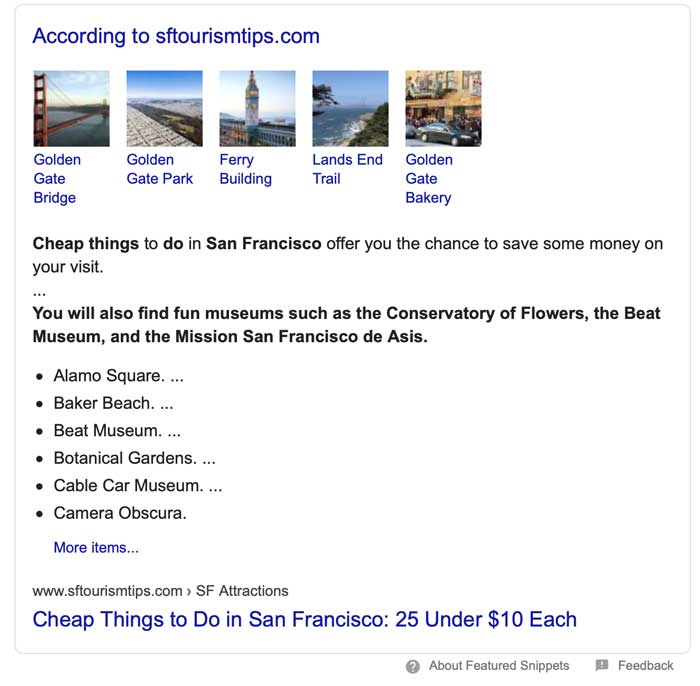
Ever wondered how to write a headline that gets the click? Because, let’s face it, your audience won’t even get to your content unless they choose your article over all the others that Google shows them.
And without an audience, your blogging efforts are a hobby at best, certainly not the basis for a thriving online business.
Consider your own Googling habits.
Which results do you click on?
Likely the ones with headlines that make you subconsciously go, “Bingo — that’s what I’m looking for!”
Similar to those headlines that you click on, your own compelling content will only get a chance if its headline is equally compelling.
So, let’s hook ‘em with great headlines!
In WordPress, an article’s headline also becomes its title, which appears as the clickable text in the search results at Google and other search engines. In this article, the term headline refers to the title.
If you use Yoast SEO or another SEO plugin, you’ll have the option to write a separate title, making the headline just that, the article’s main headline. The headline still needs to draw the visitor into reading your article, but it won’t appear in search engine results.
How to Write a Headline
1) Keep Your Promise
A good headline tells readers why it’s worth investing the next few minutes of their lives reading this particular article. The article itself is that promise made good.
While it’s possible to write a good article and “kill it” with a bad headline, you cannot take a bad article and salvage it with a good headline. (You may hook readers with a compelling promise, but they’ll soon stop reading when it’s clear you’ve failed to deliver.)
It’s crucial for your credibility that you keep any promises you make. So…
Never promise a dollar and only deliver a dime. Equally, don’t bury a one-dollar article beneath a ten-cent headline.
Whatever benefits you promise in your headlines (saving time, saving money, etc.), they will need to be benefits that appeal to your target audience.
So if the Valuable PREselling Proposition (VPP) of your recipe site is “veganism,” your audience might be new to eating vegan and interested in learning more.
Sassy Knutson, an SBI! member, who owns VeganCoach.com, nails her headline writing for the search term “vegan food pyramid.”

She starts with what people searching for, information on the vegan food pyramid, but follows it up with an enticing question — do we really need it?
And most importantly, the content on the page thoroughly answers the question and shows the vegan food pyramid, i.e., she delivers on the promise of her headline.
2) “Front-Load” the Headline With Your Specific Keyword
The strongest part of a sentence is the beginning. So if you can do it naturally, start your headline with your specific keyword (or a close variant if the keyword is awkward).
A good way to achieve this is to flip the headline around and use a colon, like in this headline example where “fish breeding” is the article’s specific keyword:
The Ultimate Guide to Fish Breeding
vs.
Fish Breeding: The Ultimate Guide
The second headline is a much stronger construction.
First comes the topic, then the promise.
In this case, the headline promises to tell the reader everything he needs to know about breeding fish.
It won’t always be possible to “lead” with your topic, so don’t force it.
Just be aware that, all other things being equal, a reader is more likely to stop on a headline if it’s front-loaded with relevant words.
The search engines will consider the headline/title to be a touch more relevant, too – a nice bonus!

3) What’s Your “Angle?”
Everybody is different and works in different ways. Generally speaking, though, it’s much better to write the headline before you write the article. Why?
A great headline contains your positioning and its, well, angle!
Decide on your angle first and the article will more or less write itself. But write the article first, with no clear strategy in mind, and you may not be able to make a compelling promise when it’s time to write the headline. Why? Because the article itself is not compelling.
Let’s say that your topic is “clam chowder recipe.” Great. What’s your angle?
- quick clam chowder
- healthy clam chowder
- cheat’s clam chowder
- luxurious clam chowder
- traditional clam chowder
- clam chowder with a modern twist
- the best clam chowder recipe ever
- budget clam chowder
True, some keywords already contain the angle (e.g., “quick clam chowder recipe”).
If so, great — that’s half the battle won… but, to write a good headline (and a good article), you need to go deeper…
“Quick” (as an angle) is vague — and vague is dull.
The difference between dull and engaging comes down, in part, to concrete details.
So be as specific as you can…
Vague: Quick Clam Chowder
Specific: Clam Chowder in Under 7 Minutes
Vague: Traditional Clam Chowder
Specific: Clam Chowder Like Your Grandmother Made
Vague: Healthy Clam Chowder
Specific: Clam Chowder With Half the Calories and All the Taste
Vague: Budget Clam Chowder
Specific: Clam Chowder for Less Than $10
Another possible angle is the style of your article. If you’re great at making people laugh, say, promise them a lighter look at the topic in the headline…
How NOT to Make Clam Chowder
My Clam Chowder Disasters (and How to Avoid Them)
4) Move Beyond the Usual
There needs to be something about your headline that makes the reader click.
You need to stand out from the uninspiring headlines (“Quick Clam Chowder Recipe”) by writing an inspired headline.
You need to stand out from the “next level” of obviousness, too: “headline-writing by numbers.”
This, by the way, also applies to writing good subheadings that pull your reader deeper into your article.
For example, you’ll find a lot of “fill in the blank” headlines online, like these:
How to _______ and ________
Why ________ Isn’t ___________
How I ________________
How You Can _____________, Too
Now You Can _______ and ________
Get Rid of ________ Once and for All
There are literally hundreds of these classic headline “formulas.” Those formulas work, but…
If you “fill in the blanks” with uninspired words, you’ll still end up with uninspiring headlines — so, you also need to use your brain, pull out a Thesaurus, and get creative.
Take “How to _______________ and ____________” as an example.
“How to Make Clam Chowder and Save Time” is okay… but that’s about all.
Use the classics, by all means. But you still need to engage the right half of your brain and move beyond the obvious.
How?
If your topic is making clam chowder, and you’ve found a great specific angle (as discussed above), you’ll have something interesting to add to the blanks.
Boring: “How YOU Can Make Quick Clam Chowder, Too”
Better: “How YOU Can Make Clam Chowder in Under 7 Minutes, Too”
Boring: “Now You Can Make Clam Chowder and Be Healthy”
Better: “Now You Can Enjoy Tasty Clam Chowder and Not Worry About the Calories”
In all honesty, though, you can forget about fill-in-the-blank headlines and just “tinker with the words” until you come up with something that appeals…
Quick Clam Chowder: A Super-Tasty Soup in Under 7 Minutes
Clam Chowder With a Spicy Twist (Your Grandmother Will Hate It)
5) Choose Your Words Carefully
This headline writing tip goes hand-in-hand with “move beyond the usual.”
Most adjectives are boring — which means, to get the click, your adjectives need to pop!
Whether they’re descriptive, emotional, or possessive, just make sure that above all else, they’re powerful.
Use a thesaurus, use a dictionary, just use stronger adjectives.
If you’re stuck, check out this list of powerful words and adjectives from Jeff Bullas’ blog.

6) Use Numbers in Your Headlines
Numbers get attention.
Take this article for instance, “Get the Click All the Time: 7 Tips to Fix Your Headlines Today.” Would you have clicked on it if we didn’t promise you 7 tips?
Let’s take a headline example from Jill Loeffler, an SBI! member, who owns SFTourismTips.com.
One particularly popular page of hers is “inexpensive things to do in San Francisco.”
Her headline for that page? “Cheap Things To Do in San Francisco: 25 under $10.”

It’s no wonder that Jill also got a Google Featured Snippet for that page, since it’s so relevant and comprehensive.
The PREselling proposition for that page is to show folks that you can do things in San Francisco on a budget. In an expensive city like San Francisco, that’s a very compelling reason to click through to Jill’s page.
7) Use a Headline Analyzer
Is using a headline analyzer cheating? Maybe.
Should you care? No.
Why? Because using a headline analyzer can boost your headline writing skills. For another way to help you write the perfect headline, read our article about how to use AI (Artificial Intelligence) for your blog.
Let’s workshop the headline of this article:
The first draft was: “7 Headline Writing Tips to Make Your Headlines More Effective.”
When I put this headline into Sharethrough’s Headline Analyzer, it comes back with a score of “67.”

“67” means average… the headline gets the job done, but it’s just kinda, “meh.”
A headline that’s just “OK” won’t get your click -— and I want your click, so…
To improve our headline, let’s put “7 Headline Writing Tips to Make Your Headlines More Effective” through the tips in this article:
- Keep Your Promise: Yeah, we’re definitely going to give you tips to improve your headlines, so this one is safe.
- “Front-Load” Your Headlines: The draft headline was kinda front loaded, but could be better.
- What’s Your Angle?: There was no angle in the headline. So, for the next draft, we want our angle to be direct and no nonsense.
- Move Beyond the Usual: Wow, yeah the draft headline was a dime a dozen.
- Choose Your Words Carefully: “Writing tips” and “more effective” are so boring — could definitely improve those.
- Use Numbers: We had “7” in my headline, so at least we did that right — now we just need to carry it into our next version.
So, when we take all these points (and what the Sharethrough tool said) into consideration, this is what we came back with…
Get the Click All the Time: 7 Tips to Fix Your Headlines Today
Much better.
… and the analyzer also agrees.
At “80,” our headline is now 13 points better than the original draft. It also reads snappier and achieves the angle we want.

Now, to make sure that it’s definitely a great headline, run it through another tool: SERPsim.
SERPsim is basically a simulator for, well, the SERPs (search engine results pages), i.e., it shows you how the search engines will display your SEO Title (which is usually your main headline in WordPress unless you use an SEO plugin like Yoast SEO), meta description, and everything else.
Our new headline fits and it looks great… but most importantly, it’ll get the click.
What Makes a Strong Headline? The Wrap Up
Your headline needs to incite a reaction — curiosity, excitement, even disdain, anything that will make the searcher pause.
When the searcher pauses on your headline, you’ll likely get the click.
Just because you want that click doesn’t mean you need to resort to tabloid-style headlines.
Download the headline writing tips worksheet and refer to it whenever you write a new article.
Like all practices related to your blog, keep it real and never force it.

Latest posts by Yuki Evoy (see all)
- Quit Your Day Job in 5 Steps: How I Did It - December 15, 2022
- How to Use AI for Your Blog: Artificial Intelligence 101 - November 10, 2022
- Why a Side Hustle is the New Job Security (And How to Start Yours) - July 26, 2022


